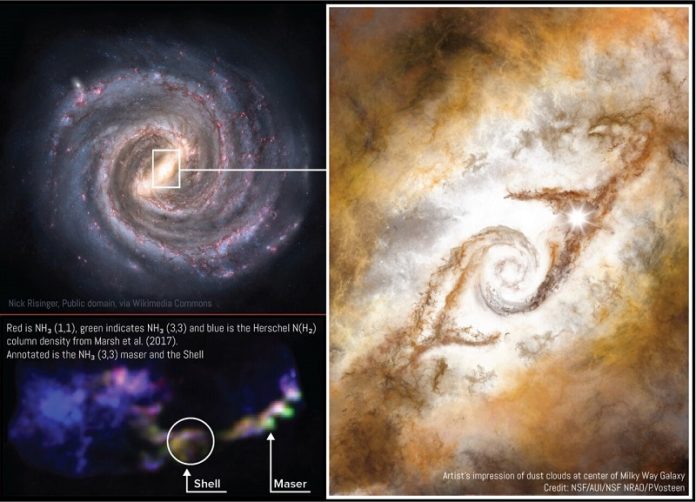
Astronomers have discovered a massive and previously unknown cloud of gas and dust in a quiet corner of our Milky Way galaxy.
This hidden structure, named the Midpoint cloud, is about 200 light-years long and filled with the raw materials needed to form new stars.
In a new study published in The Astrophysical Journal, scientists used the Green Bank Telescope in West Virginia—one of the most powerful radio telescopes in the world—to peer deep into this mysterious region.
What they found surprised them: a Giant Molecular Cloud (GMC), a dense, cold collection of gas that had gone unnoticed until now.
These types of clouds are key locations where stars are born.
“We had no idea this cloud even existed until we looked directly at this patch of the sky,” said Natalie Butterfield, the study’s lead author and a scientist at the National Radio Astronomy Observatory.
“After studying its size, mass, and density, we realized it was a true giant molecular cloud.”
The Midpoint cloud sits in a special part of the galaxy—right between the Milky Way’s outer disk and its more chaotic central region.
It appears to be part of a dust lane, a kind of cosmic river that carries gas and dust toward the galaxy’s center. This location gives scientists a unique chance to study how material moves through the galaxy and fuels the birth of new stars.
Using sensitive radio observations, the team identified specific molecules like ammonia and cyanobutadiyne that signal the presence of dense gas.
These molecules helped reveal what’s going on inside the cloud. One exciting discovery was a new “maser,” which is like a natural laser that shines in microwave wavelengths. These are usually found in areas where stars are forming.
The researchers also spotted several compact clumps of gas that seem ready to collapse into new stars. One of these clumps, called Knot E, might be something known as a frEGG—a dense ball of gas slowly being eaten away by radiation from nearby stars.
They also found signs of older stellar activity, including a shell-like structure that may have been created by the explosive death of a star. The entire cloud is full of turbulent gas, which may be caused by the flow of material into the galactic center or by collisions with other clouds.
According to the team, the Midpoint cloud could be a key piece in understanding how galaxies like ours move gas to their centers and create new stars under extreme conditions.
This unexpected discovery shows that even in well-studied galaxies like the Milky Way, the cosmos still holds many secrets.
Source: KSR.



